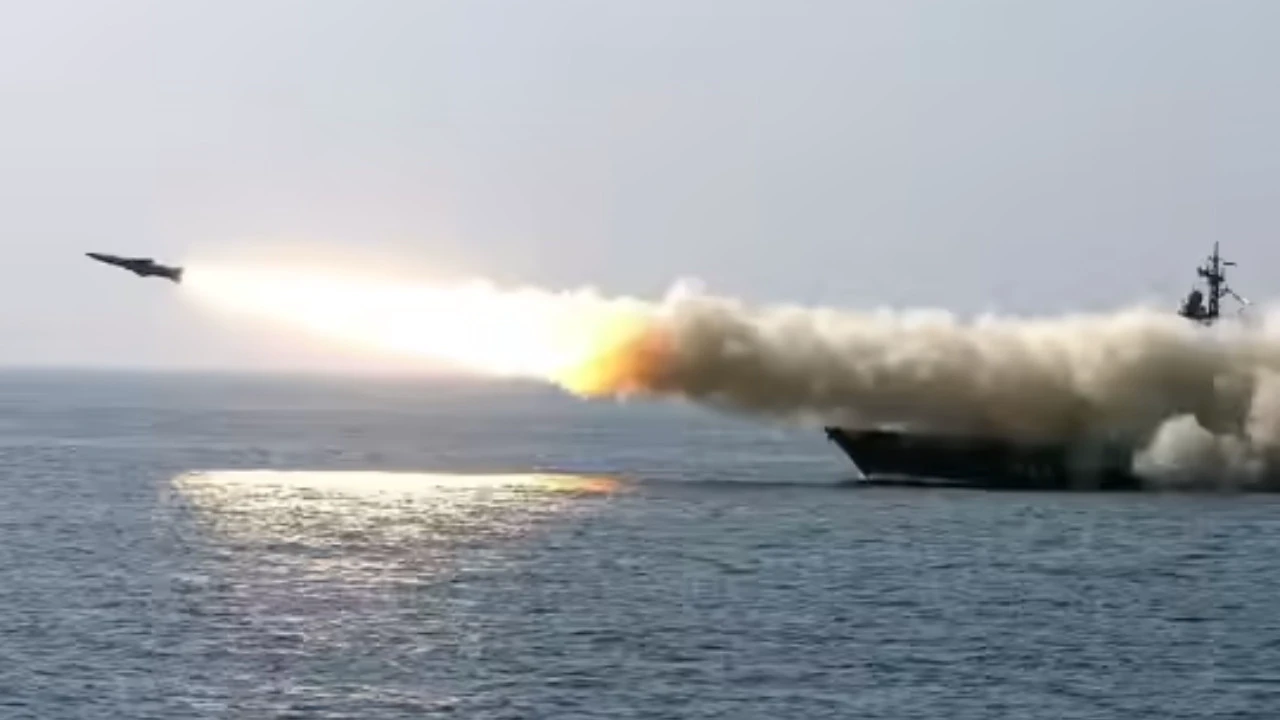Missile technology around the world is advancing rapidly. Each new missile is faster and more lethal than its predecessor. Here’s a look at the 10 fastest missiles in the world and their top speeds:
BrahMos Missile (India)
The BrahMos missile is considered one of the fastest cruise missiles in the world. It has been jointly developed by India and Russia. According to Indian defense institutes, the BrahMos missile travels at a speed of Mach 3, which is approximately 3,400–3,700 km/h (2,100–2,300 mph), making it one of the fastest cruise missiles globally. Its two-stage design is crucial to achieving and maintaining its high speed. The initial boost comes from a solid rocket booster, which then detaches, allowing the liquid ramjet to take over for sustained supersonic flight. Although its range is classified, it is believed to be capable of striking targets between 300 km and 800 km.
Zircon Missile (Russia)
The Zircon is a Russian hypersonic cruise missile capable of flying at Mach 9 (11,113 km/h). It is designed for strikes against ships and ground targets. Its high speed makes it especially dangerous to enemy naval vessels. Primarily designed as an anti-ship missile, it can also be used against land targets. It is deployed on various Russian naval platforms, including frigates like Admiral Gorshkov and submarines.
The Zircon has an estimated range of 1,000 km. During flight, it is reportedly covered by a plasma cloud, which helps it evade radar detection.
Kh-47M2 Kinzhal (Russia)
The Kh-47M2 Kinzhal is a Russian air-launched ballistic missile capable of flying at Mach 10 (12,348 km/h). It can carry both conventional and nuclear warheads. The missile can be launched from aircraft such as the Tu-22M3 bomber, MiG-31K interceptor, or modified Su-34 strike fighter.
When launched from the MiG-31K, its range is 460–480 km, but it increases to 2,000–3,000 km when carried by the Tu-22M3M.
AGM-183A ARRW (USA)
The AGM-183A is an air-launched rapid response weapon (ARRW) developed for the U.S. Air Force. It can fly at Mach 5 (6,174 km/h) and has a range of 1,600 km. Designed to be launched from bombers like the B-52H and B-1B, it uses a boost-glide system where a rocket accelerates the glide vehicle to high speed before it detaches and heads for the target. Its standoff capability allows the launch platform to stay clear of threat zones. It enhances the U.S. Air Force’s hypersonic strike capability to hit heavily defended targets.
RS-28 Sarmat (Russia)
Also known as “Satan II,” the RS-28 Sarmat is a Russian intercontinental ballistic missile (ICBM) capable of reaching speeds up to Mach 20 (24,696 km/h). It is a liquid-fueled, three-stage missile launched from a silo. The RS-28 can carry hypersonic glide vehicles (HGVs) and a Fractional Orbital Bombardment System (FOBS), making it highly advanced and powerful. Designed to carry large payloads over intercontinental ranges, it provides high thrust and performance using liquid propellants.
Hwasong-15 (North Korea)
Hwasong-15 is North Korea’s most powerful ICBM, capable of targeting up to 13,000 km.
Its speed exceeds Mach 22 (approximately 27,000 km/h or 16,777 mph), allowing it to potentially reach the U.S. from North Korea. Its high altitude and maneuverability make it difficult to detect and intercept, posing a significant threat.
LGM-30 Minuteman III (USA)
The Minuteman III is a U.S. intercontinental ballistic missile capable of flying at Mach 23 (approximately 28,300 km/h or 17,600 mph). With a range of 13,000 km, it is known for delivering nuclear warheads with exceptional accuracy. Manufactured by Boeing Defense, the missile uses three solid-propellant rocket motors (ATK M55A1, SR-19, and SR-73 in each stage). It weighs 36,030 kg and has an operational range of about 10,000 km.
Trident II (USA/UK)
Trident II is a submarine-launched ballistic missile (SLBM) used by both the U.S. and the U.K., with a range of up to 12,000 km and speed of Mach 24 (29,635 km/h). It’s a three-stage, solid-fueled, inertially guided missile. Deployed on U.S. Ohio-class and U.K. Vanguard-class submarines, it is known for its precision, payload capacity, and ability to target hardened sites. It can carry multiple independently targetable reentry vehicles (MIRVs), each with a nuclear warhead.
DF-41 (China)
The DF-41 missile can reach speeds of Mach 25 (30,870 km/h). Also known as Dongfeng-41, this ICBM can target the U.S. and is considered part of China’s fourth-generation strategic missiles. Operated by the PLA Rocket Force, the DF-41 can carry multiple MIRVs and is part of China’s nuclear modernization strategy. It significantly enhances China’s strategic deterrence capabilities.
DF-ZF (China)
The DF-ZF is China’s hypersonic glide vehicle (HGV), capable of exceeding speeds of Mach 10.
It serves as the warhead for the DF-17 medium-range ballistic missile. According to the Target Defense Academy, it travels between Mach 5 and Mach 10 (3,836–7,680 mph). Designed for high maneuverability during flight, it is difficult to intercept. Its first flight test was in January 2014, and it was publicly revealed during the 2019 National Day military parade.
Avangard (Russia)
Russia’s Avangard is a hypersonic glide vehicle capable of reaching speeds up to Mach 27 (about 33,339 km/h). It is highly maneuverable during flight, making interception extremely difficult.
Developed under Project 4202 (code-named Yu-71), it can be carried by heavy ICBMs such as the UR-100UTTKh, R-36M2, and RS-28 Sarmat as part of MIRV payloads. It can deliver both conventional and nuclear warheads and can change course mid-flight at hypersonic speed.
Know the World’s 10 Fastest Missiles
Missiles are among the most critical weapons in any nation’s arsenal. They provide the capability to strike from long distances and can deliver both conventional and nuclear warheads. This global race to build powerful missiles is ongoing. Here’s a look at the top 10 fastest missiles in the world today.
